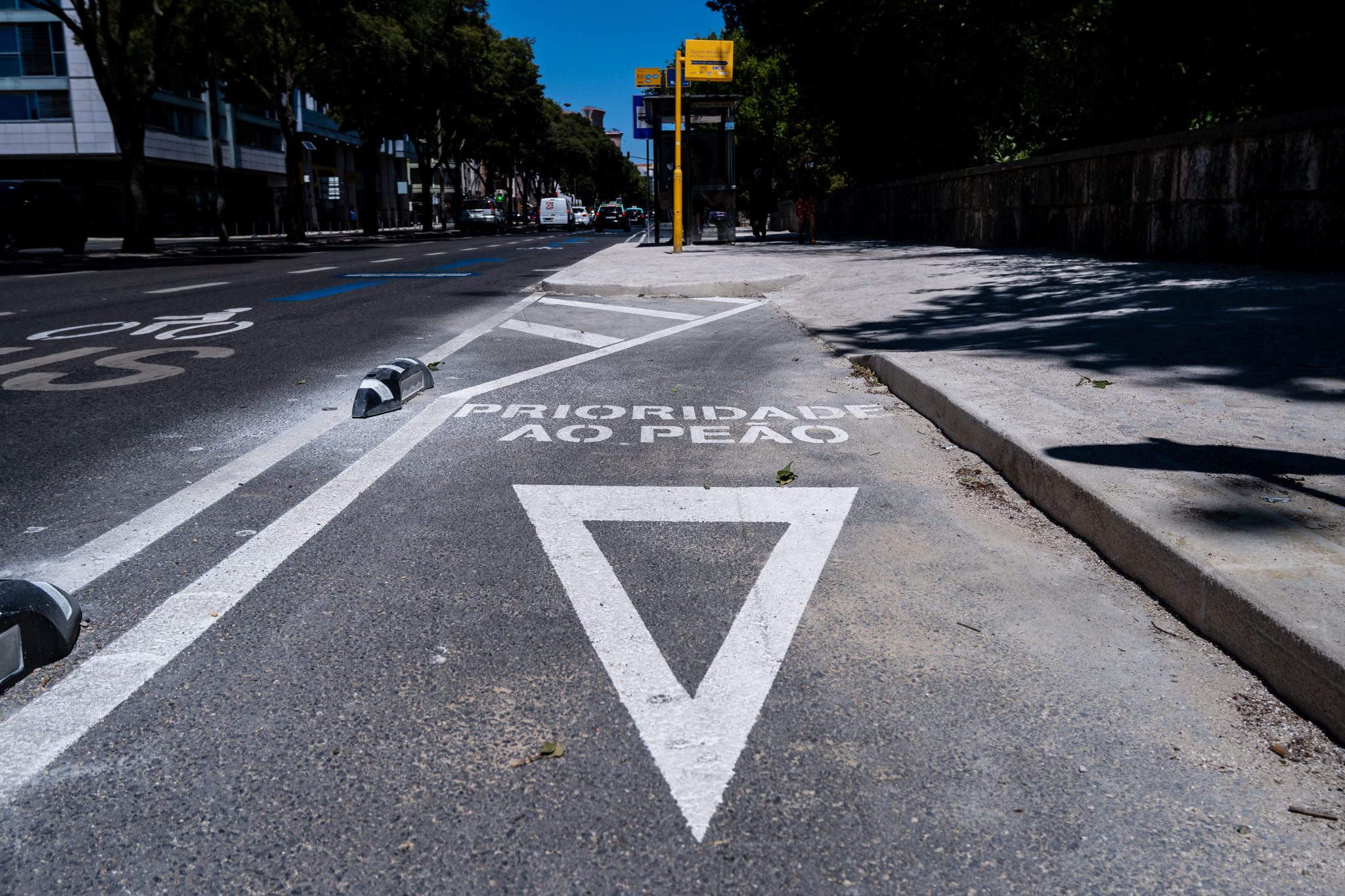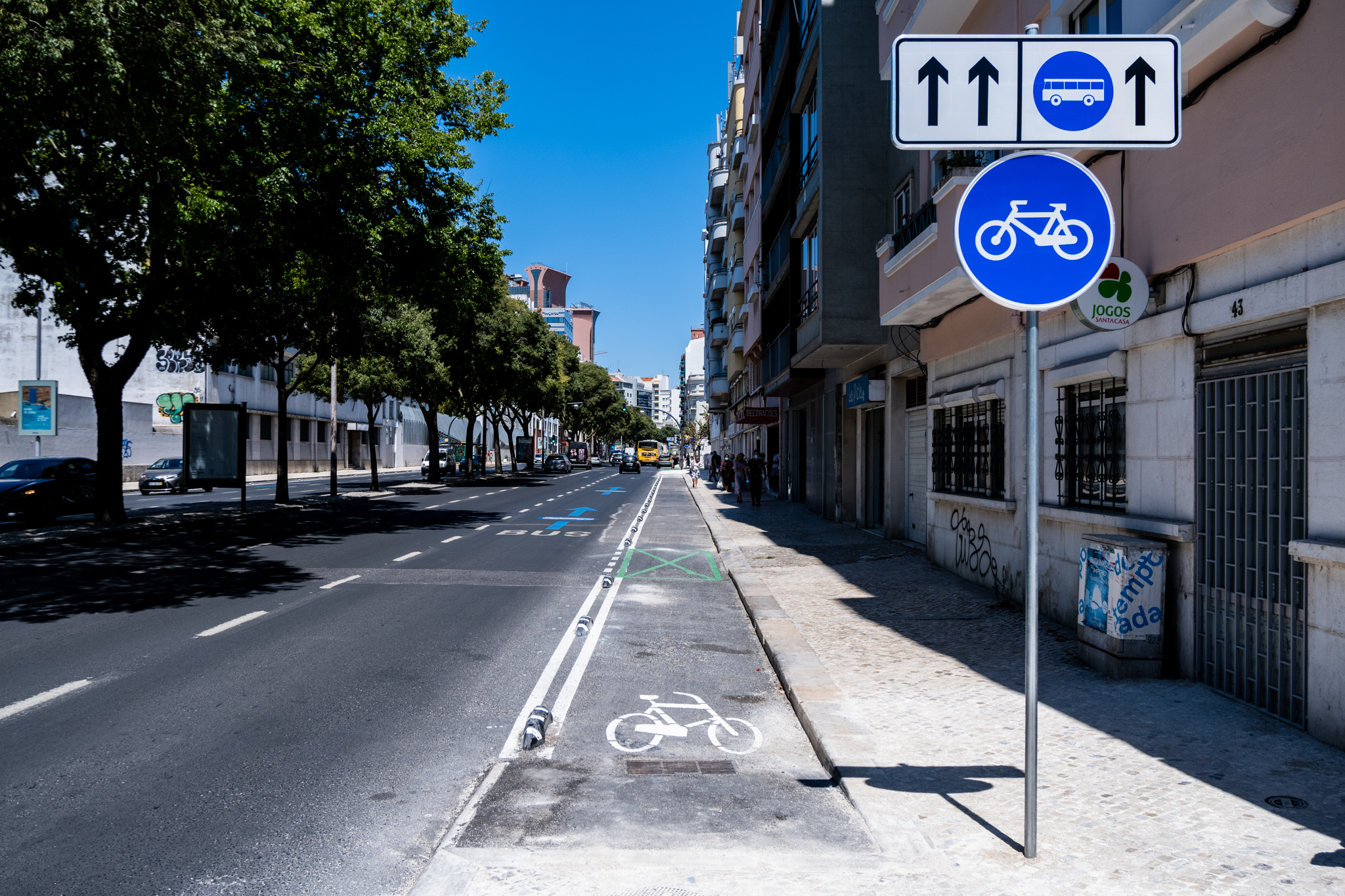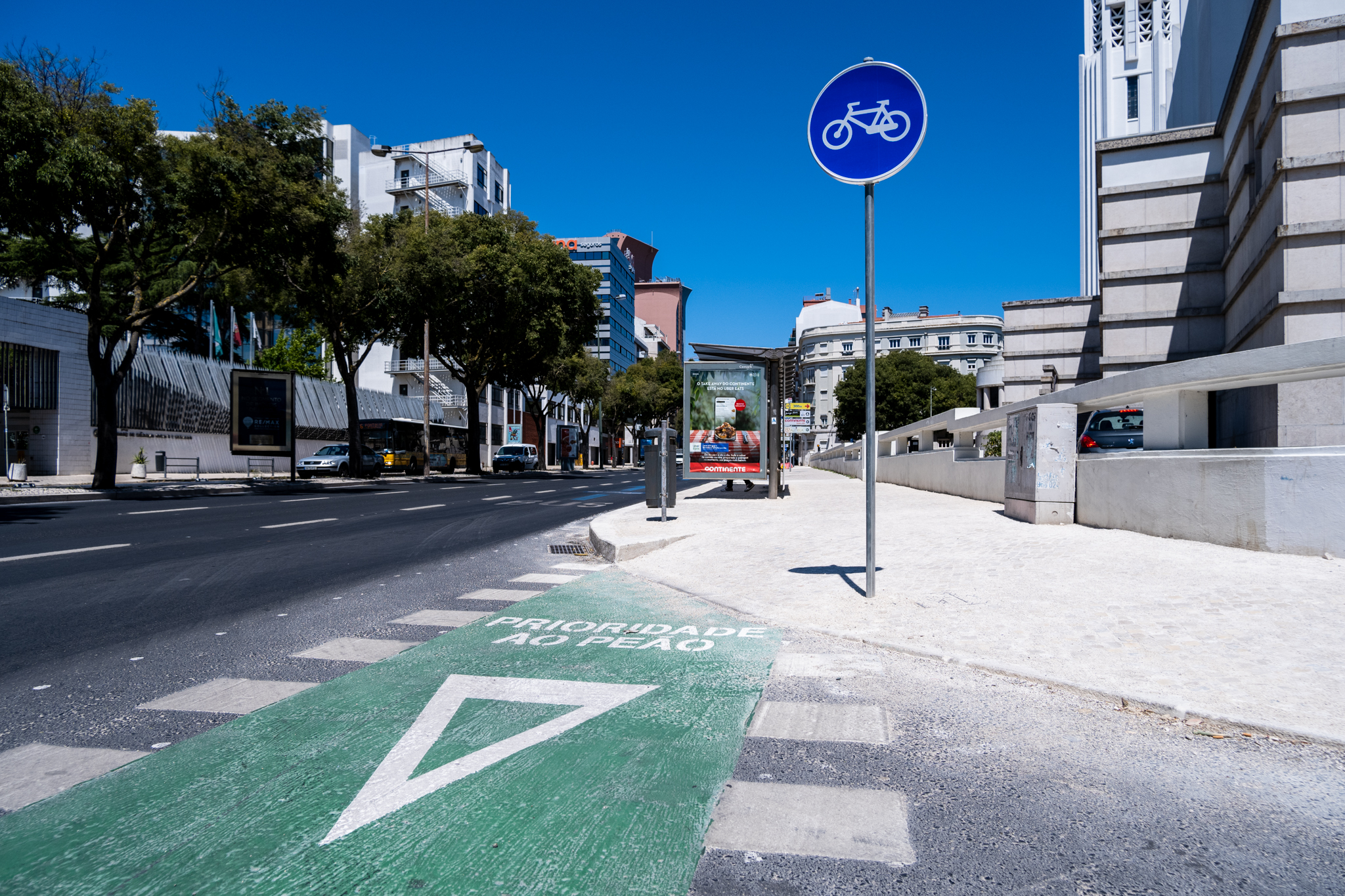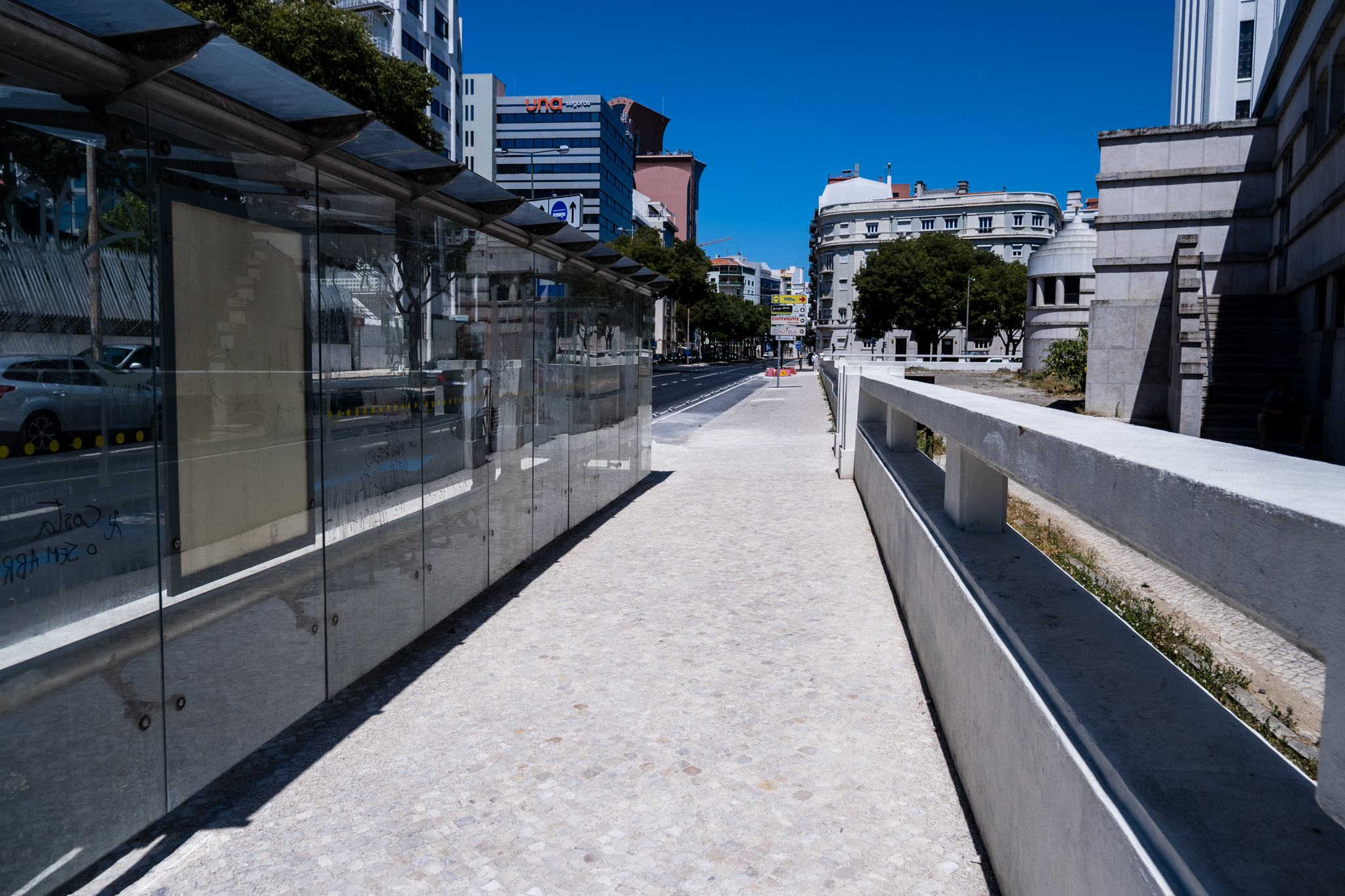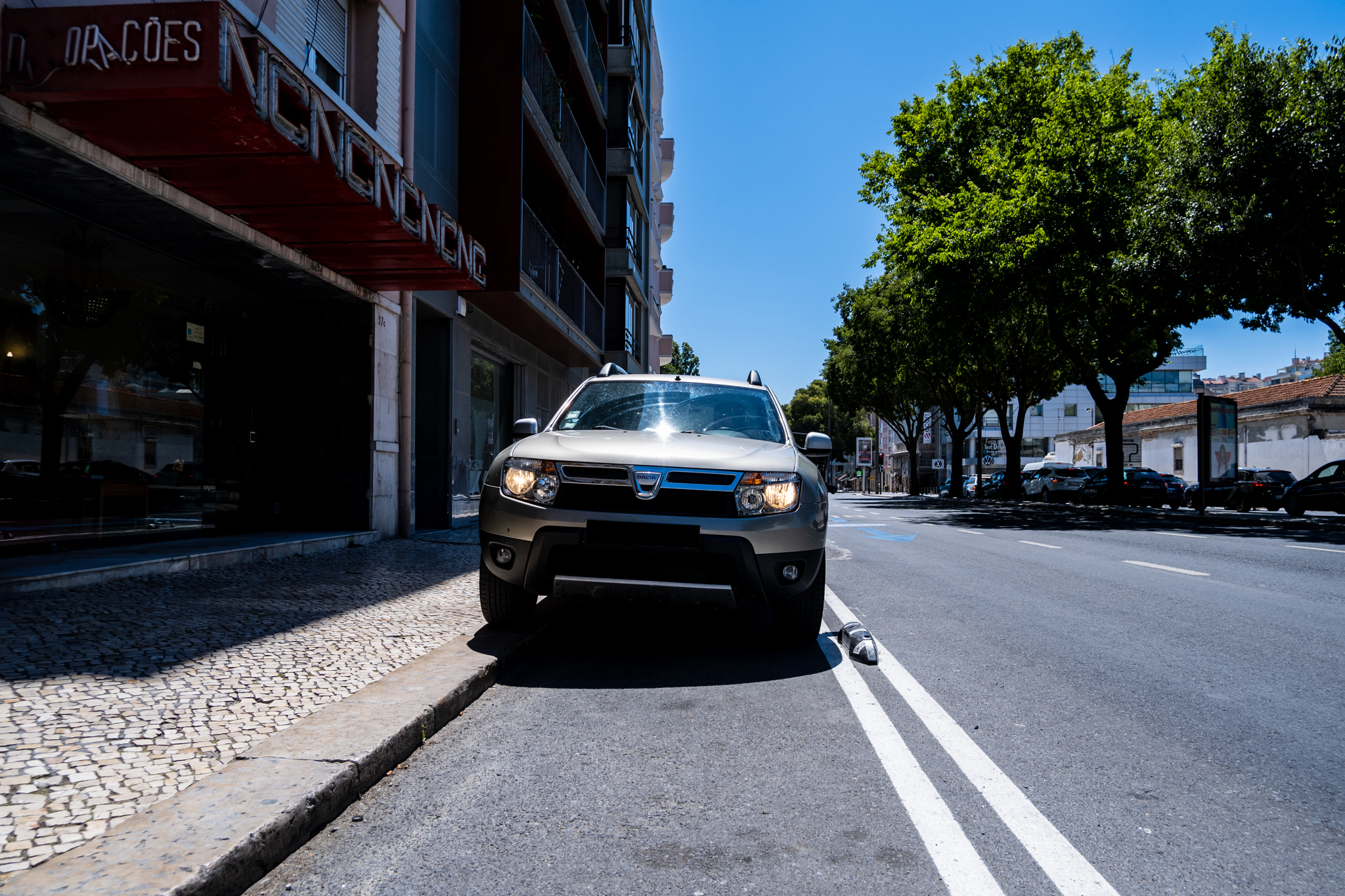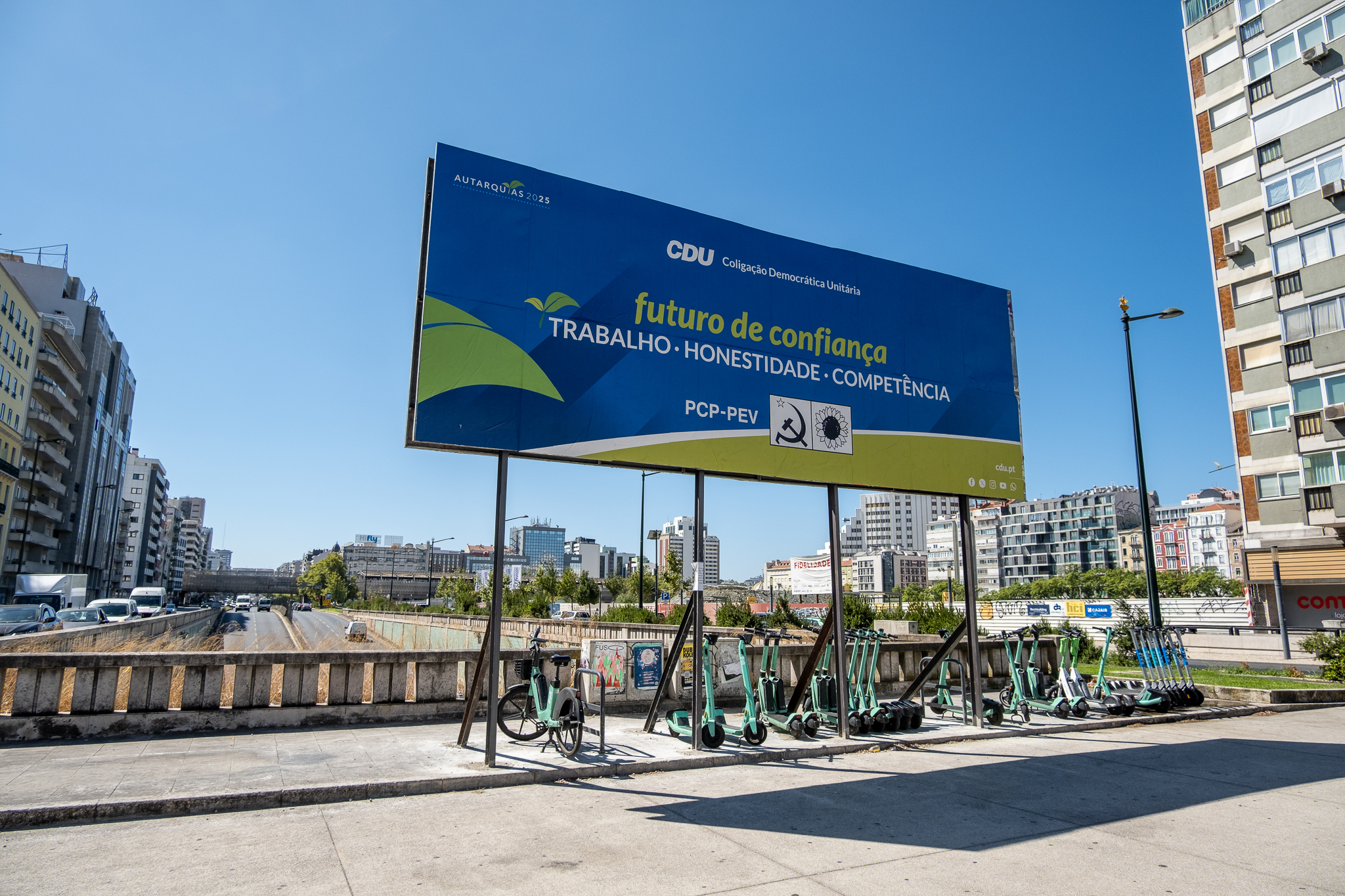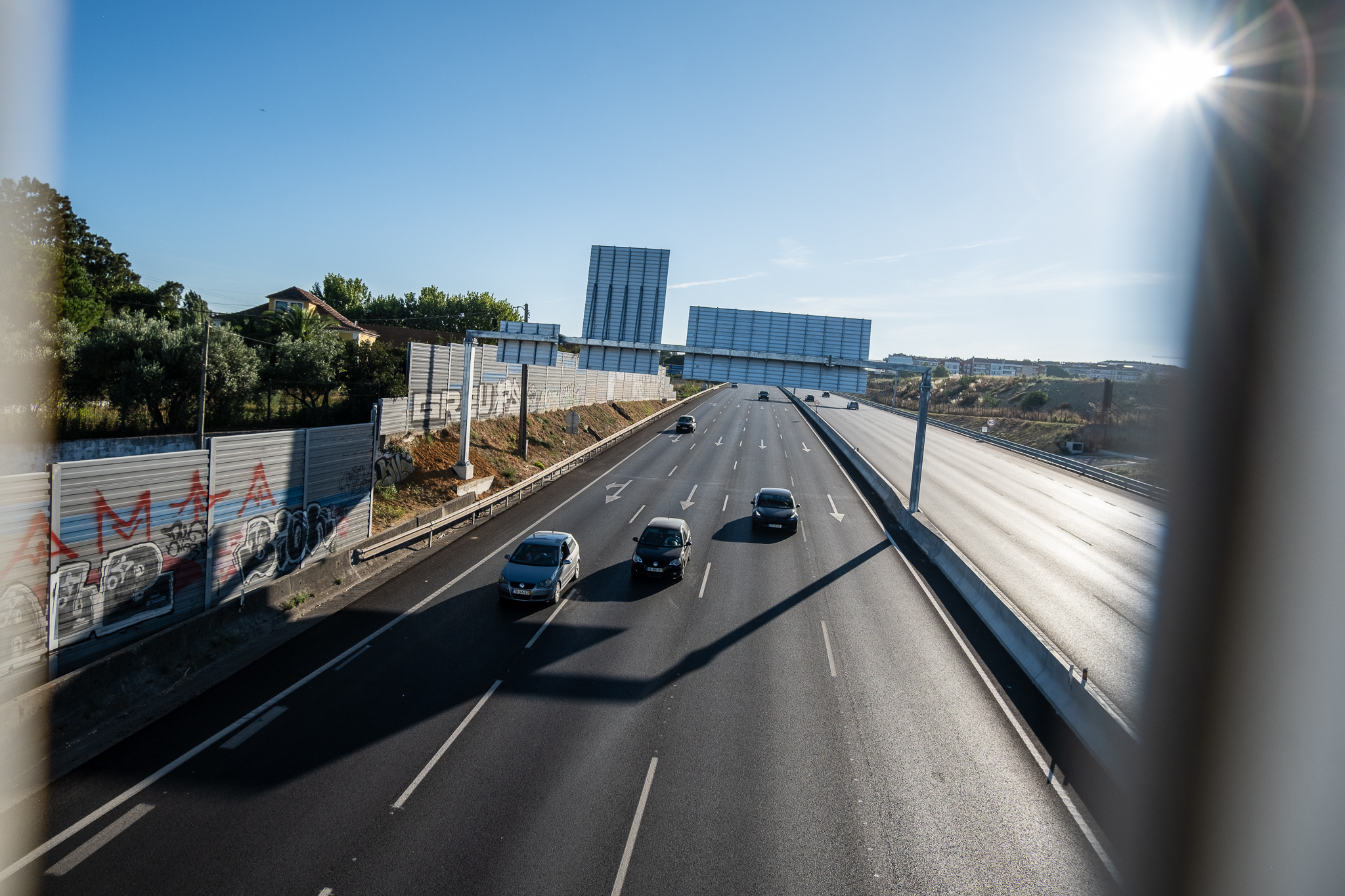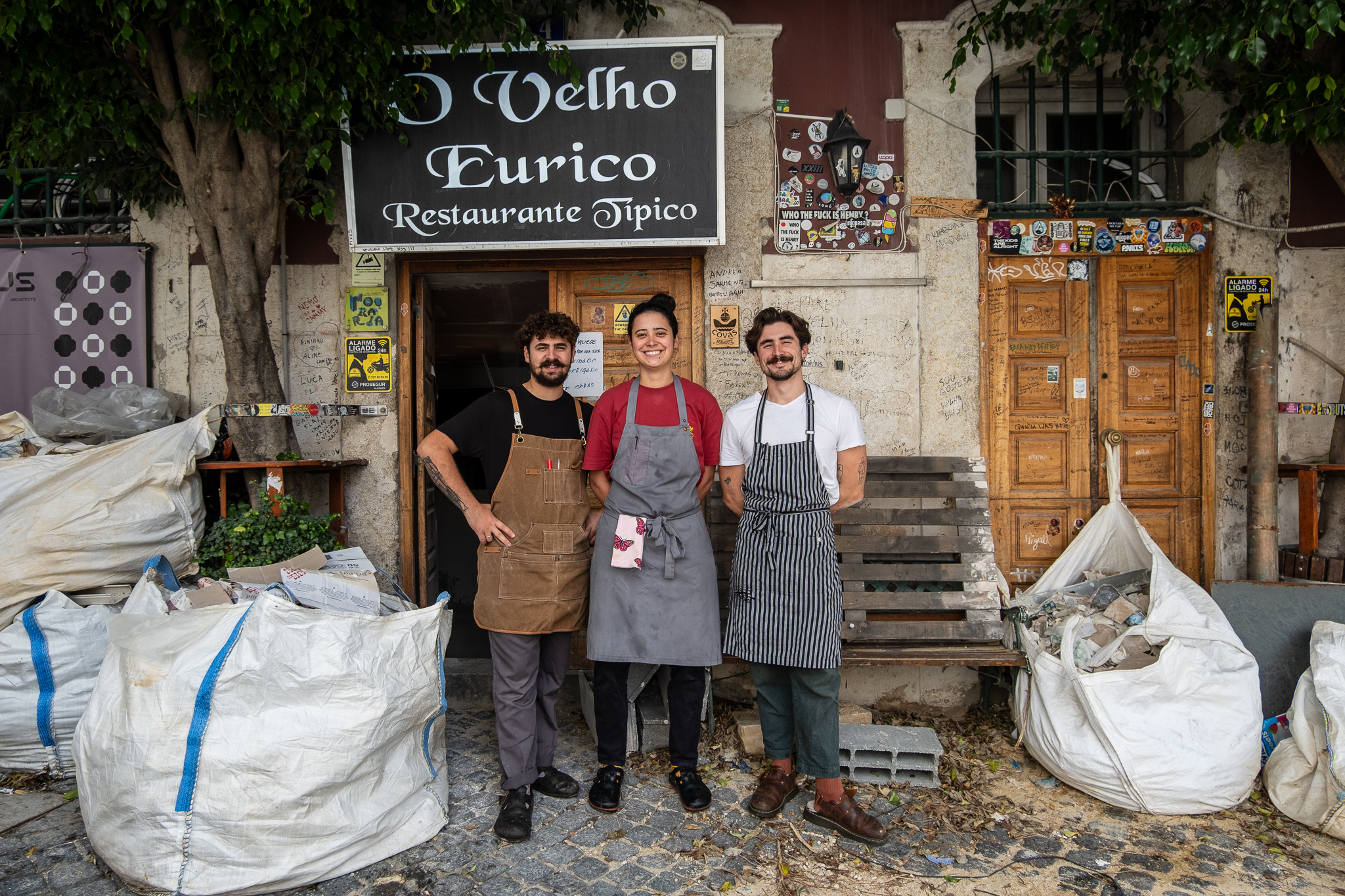According to the Lisbon City Hall, the most recent bicycle path in the city, in Avenida de Berna, was a secondary work in a simple intervention that proposed to create a BUS lane in that artery.
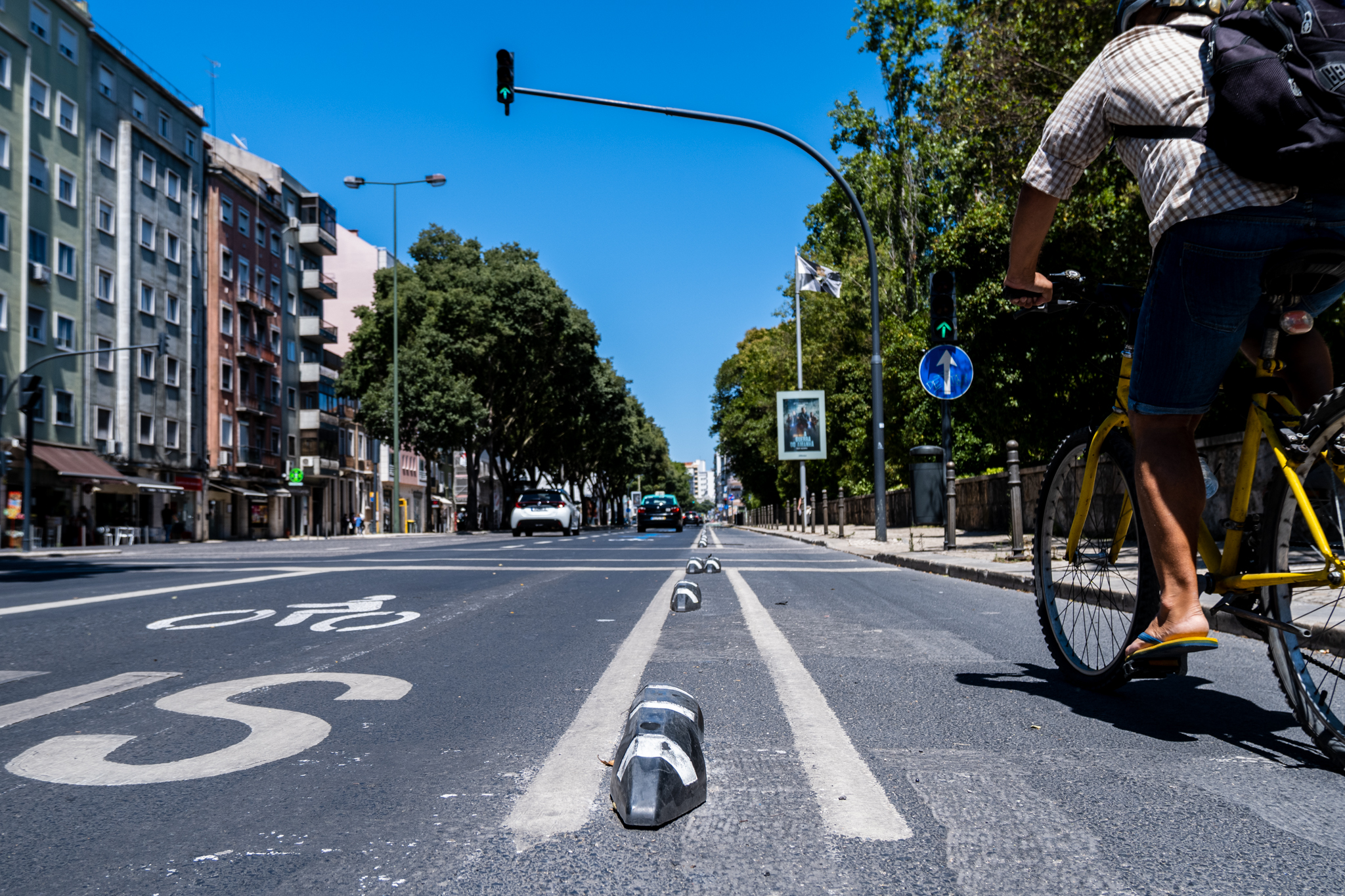
In an interview in 2019Miguel Barroso, an architect specialized in urbanism and urban mobility, said “the possible city is the result of all the constraints, forces and interests".. Miguel was referring to the political will of the municipality and the Parish Councils, the electoral objectives, but also to the various regulations that must be complied with and it is not always possible to comply with all of them. "Then you try to create the balance of the situation that causes the least disruption. Sometimes the impaired bicycles come out, sometimes the cars, sometimes the pedestrians. Ideally, no one would come out." Messing with public space - added the expert - "it's very delicate" and a work of "weighing the pros and cons".
In the opinion of the Lisbon City Council, the city's newest bike path, on Avenida de Bernait was a secondary work in an intervention of simple character but that, nevertheless, proposed to create an important BUS lane on that artery. The goal: that the 18 buses/hour that pass by Avenida de Berna could find there a high performance corridor, which in the future will connect Areeiro, through Avenida João XXI, to Alcântara, through Avenida de Ceuta. And while this BUS corridor was being built, the location of some bus stops was improved to unblock the pedestrian channel, surface parking was removed, and a new bus lane was installed. two one-way bike paths - one in each direction of the avenueThis is the connection between Praça de Espanha and Avenida da República, and vice-versa.

A bike path with too many compromises and some inattention to the rules
In light of Municipal Master Plan (PDM)which regulates what can and can't be done in the city of Lisbon, the Avenida de Berna is classified as 2nd level in the hierarchy of the road networkthat is, it is a main distribution pathway that "ensures the distribution of the largest traffic flows internal to the county, as well as the average routes and access to the structuring network". As a 2nd level boulevard, Bern Avenue is subject to a number of basic features, such as minimum width of 3 meters for traffic lanes, desirable minimum number of two lanes in each direction, parking "subject to roadway operational restrictions." no loading and unloadingpresence of BUS lanes, a sidewalk at least 3 meters wide (if it is a new street), and segregated bike lanes.
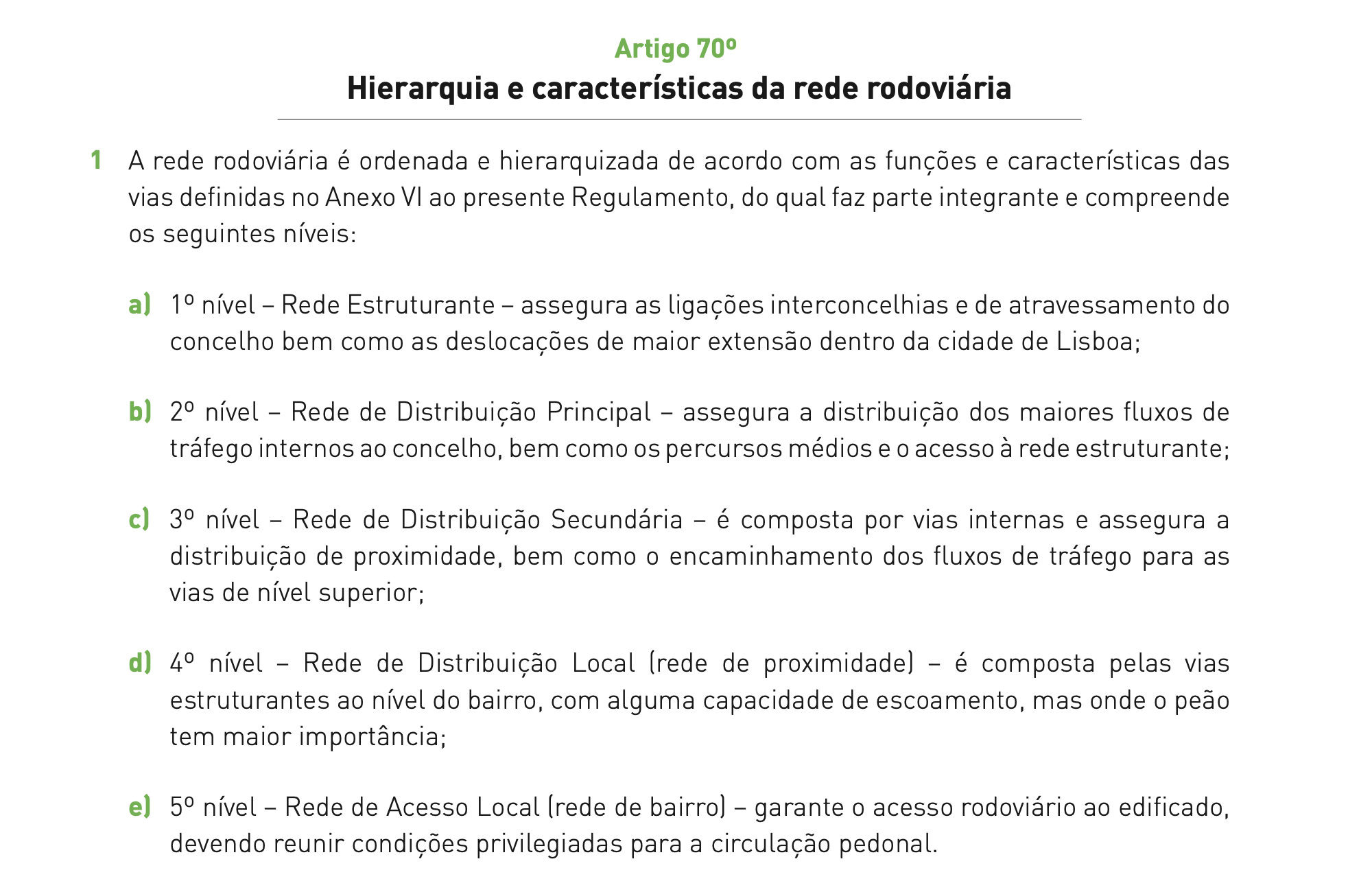
On top of the PDM, there is another type of document, called Public Space Manual (MEP)which stipulates a set of best practices and technical guidelines that should prevail in the design of streets and public space in the city. Launched in 2018, this advisory manual is very clear on what should or should not be done in the creation of cycling spaces. It reads as follows "the creation of space for the implementation of cycling routes should always be guaranteed using dead spaces or roadways, and should not be at the expense of pedestrian space"allowing exceptions "when justified and only when the profile width ensures pedestrian circulation quality (>2.50m free of obstacles)".
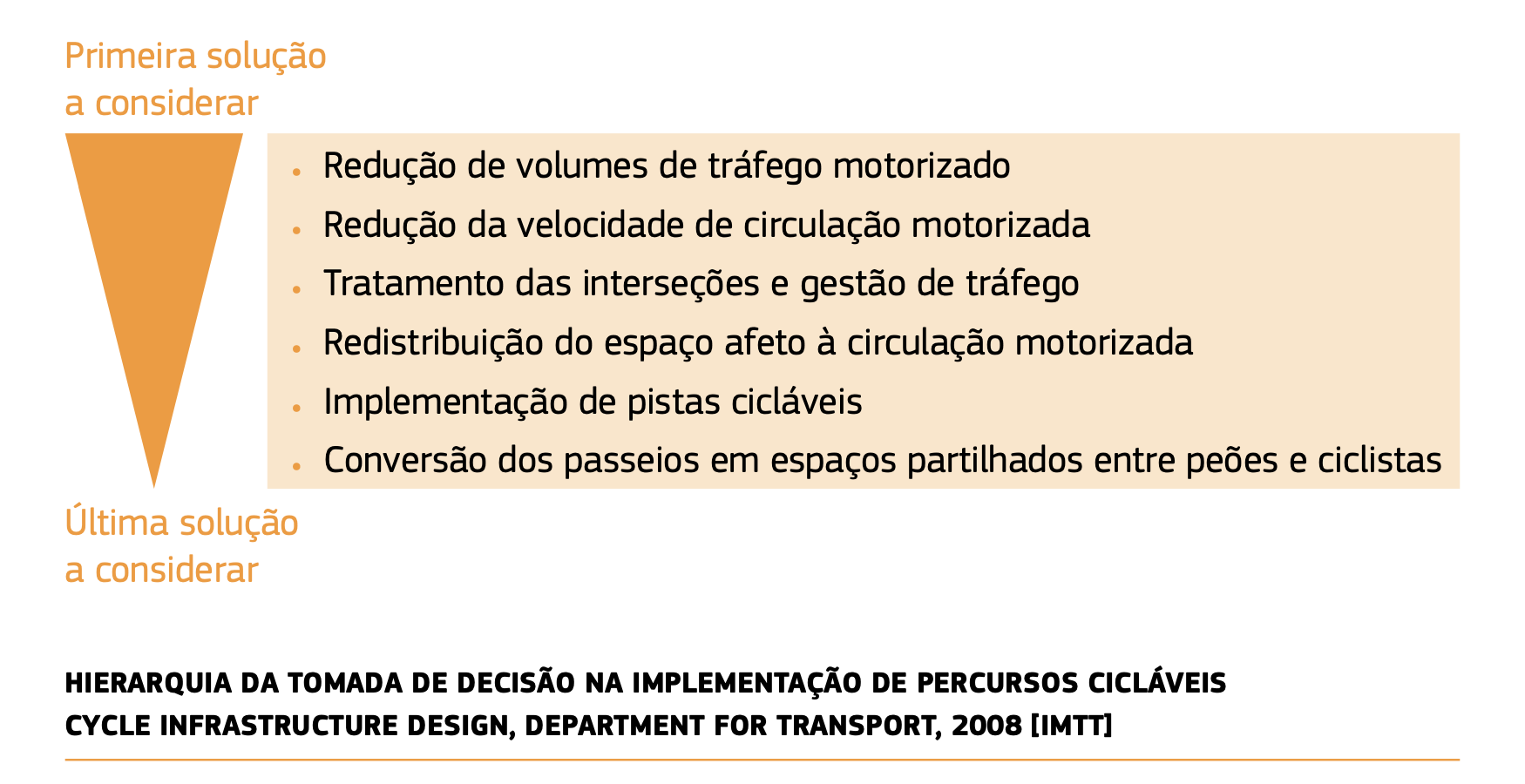
We also read that "coexistence with pedestrians should be avoided"except for calls "traffic calming zones" described in the PDM, that is, in neighborhoods where speeds and traffic are reduced, allowing a healthy coexistence between all vehicles at 30 km/h. The Public Space Manual also indicates that a The BUS lane must be between 3.25 and 2.50 meters wideand that the sidewalks should be no less than 1.50 meters wide (but the recommended one is six feet, as it allows two people in wheelchairs to cross paths).
Now, when you think about an intervention on a boulevard like the Berne, you have to look at these regulations, combine the different guidelines and establish the compromises that will be necessary due to budget limitations, the characteristics of the work itself, and the street in question. The intervention on Avenida de Berna is still to be finished, because there are some details to be dealt with, but it can be said that overall it is already concluded: the BUS corridor is operational, the bicycle lane is passable, and there are already conditions to make an assessment of who gained the most and who lost the most. All in all, everyone - cars, public transportation, pedestrians, and bicycles - will have gained a little, but when it comes to compromises, the biggest losers will be soft mobility (we'll get to that in a minute).
| What has been gained? | Are the regulations followed? |
|---|---|
| Two BUS lanes, one in each direction, that will be part of a high performance corridor between Areeiro and Alcântara; | The existing BUS lanes in each direction were designed with a width of 3.30 meters, meeting MEP recommendations; |
| Two lanes of automobile traffic in each direction; | The width of the traffic lanes has been slightly increased to meet the minimum requirement of 3 meters, stipulated in the PDM; |
| Clear sidewalks throughout due to the relocation of two bus stops that were blocking the pedestrian channel, especially for people with reduced mobility (a third stop is planned to be moved); | The sidewalks are more than 1.50 meters (MEP), and in some places they are more than 2.50 or 3 meters; |
| Two segregated one-way bike lanes, one in each direction; | The bike paths are segregated, as established by the PDM. However, they present areas shared with pedestrians, contrary to the MEP; |
| Surface parking was eliminated (there were 101 spaces on the avenue). Spaces were reserved for residents on adjacent streets; | The PDM states that parking on 2nd level boulevards is "subject to roadway operational restrictions." |
| The loading and unloading places were relocated to adjacent streets. | There are no loading and unloading on 2nd level streets in light of the PDM. |
A process that started and went wrong
The intervention on Avenida de Berna started in early 2021 with the publication of the project on the Chamber's website and an almost immediate backlash from Avenidas Novas residents, concerned about the announced removal of the hundred or so parking spaces on the avenue. Despite the fact that the underground car parks in the area have an average occupancy of less than 50% and that, at night, residents occupy only 60% of the available spaces on that arteryAccording to data released by the City Hall, the Parish Council of Avenidas Novas accepted popular pressure and held a face-to-face "emergency meeting" in February, at the height of the pandemicwith time for public interventions and with the presence of the mobility councilman, Miguel Gaspar.
No changes to the project resulted from the session, and work on the site began in mid-March, as originally planned. The work took longer than the three months originally planned (and is still going on) and had changes in betweenLast minute compromises that ended up hurting pedestrians and bicycles, in a project that initially was not ideal for them.
The refuges at the bus stops
One of the main advantages of intervention in Avenida de Berna consisted of clearing the pedestrian channel with the relocation of two bus stops. These would become two small refuges (or islands)In this way, the continuity of the cycling corridor would be ensured, as well as the circulation of people with reduced mobility. This way, the continuity of the cycling corridor would be ensured, but also the circulation of people with reduced mobility, that in the previous Avenida de Berna, would have difficulties to pass, for example, in front of one of the most prestigious cultural institutions of the city, the Calouste Gulbenkian Foundation.

The refuges planned on paper began to be implemented on site as they were designed: a 1.20-meter cycling channel behind the stops, these isolated between the bike path and the road, and the sidewalk with sidewalk in the remaining space. This design would be applied both to the stop in front of the Gulbenkian and the one next to the parish. However, an internal decision in the City Council reportedly aborted the construction of the islands in favor of an alternative: instead of separating the bike lane from the sidewalk, the entire sidewalk would be paved and the bikes would have two ramps to get on and off the sidewalk, passing behind the bus stops in a coexistence area. The last minute change will have delayed the work by forcing the removal of the kerbs that were already being put in place, as documented in the photo below:
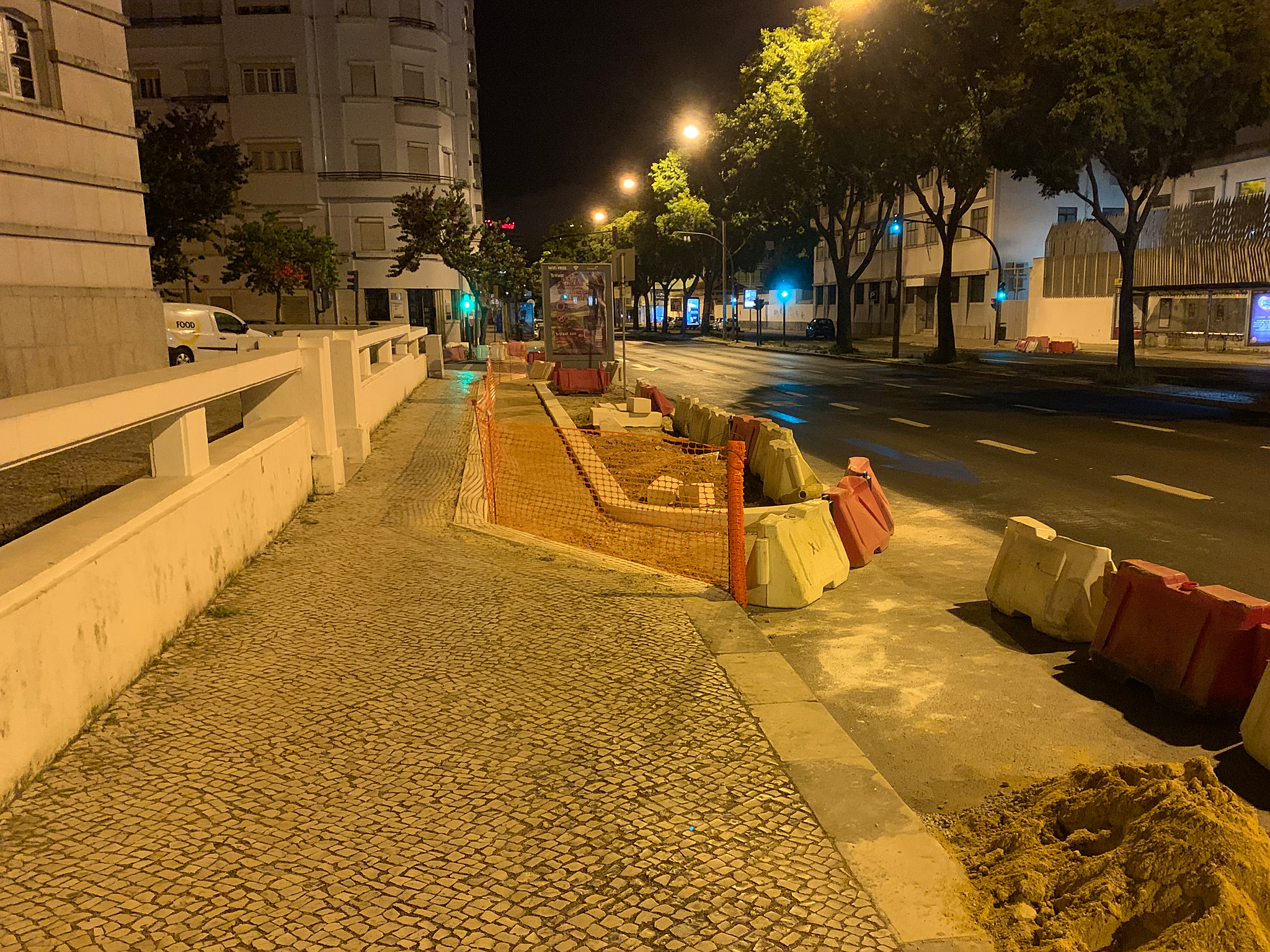
As far as Lisboa Para Pessoas found out, the change was based on the fact that it was not possible to guarantee a pedestrian channel with a minimum of 1.50 meters in some parts with a segregated bike path, so a mixed zone was chosen. However, the sharing of space between pedestrians and cyclists is not only advised against in the municipality's Public Space Manual, but also fosters unnecessary conflicts in a city already antagonized by the increased visibility and presence of the bicycle in public space. These conflicts are visible in older infrastructure such as the Avenida do Brasil, which has a similar scheme to the one now applied to Avenida de Berna, with the bike lane interrupting before bus stops and forcing bicycles to share space with pedestrians.
In addition to the pedestrian and bicycle sharing areas behind the bus stops, coexistence zones also exist near traffic lights and at intersectionswhere the bike lane also blends in with the sidewalk - there are, however, markings on the ground indicating loss of priority for cyclists and "pedestrian priority". Also the connection of the bike lane from Avenida de Berna to Avenida da República is not done and there is a problem here for those who come from one of the bike lanes and want to take the other - they will have to improvise a bit crossing two traffic lights, through the middle of a space where at rush hour many pedestrians convergeand an internal/local transit lane of the Avenida da República.
Informal loading and unloading
While the work is still underway, another last minute change that shook the project. This one came from the Avenidas Novas parish council and was probably the result of new popular pressure in a year of local elections and, therefore, critical for any politician in office. In a bulletin sent to the parishioners, the Junta said it had managed to "improvements for residents and merchants" after negotiations with the Lisbon City Council's mobility councilman and announced the creation of "quick stop zones, where residents on the avenue can stop to drop off or pick up children and citizens with reduced mobility or to unload supermarket groceries, before looking for parking nearby". "Also traders can use these zones for quick loading and unloading operations"The bulletin, which was not published on the Junta's website but was spread by some people on social networks, is also available.
These "quick stop zones" have been implemented, in the last few days, in front of garage entrances. They are marked with a marking that resembles the usual signage of a place for loading and unloading, only with another color, which puts these spaces in a dubious legal framework. In light of Traffic Signaling Regulation (RST)The road marking "M14a - Parking for loading and unloading" stipulates a yellow rectangle cut obliquely by two lines also yellow - they cannot have any other color. Thus, and following the RST, these "quick stop zones" do not exist, which may pose doubts to drivers, who may legitimately think that a stop in that space is authorized, and to the authorities themselves.

Who also does not recognize the "quick stop zones" implemented by the Parish Council is the City Council itself. A spokesperson from the mobility councilman's office, Miguel Gaspar, explained to Lisboa Para Pessoas that there are no loading or unloading pockets on top of the bike lane and that, under the Highway Code, a stop or parking on a bike lane is prohibited and regulated with a fine. The same spokesperson explained that, as foreseen in the project, loading and unloading will be created in the perpendicular streets, which also happened along Avenida Fontes Pereira de Melo.
However, even with the informally marked "fast stops", there has been a lot of abusive parking on top of the recent bike lane on Avenida de Berna - as has been denounced on social networks and as Lisboa Para Pessoas has observed. This parking occurs, curiously, outside the "fast stop zones", perhaps because this way the access to garages is not blocked. The misdemeanors observed have occurred mainly in the areas of greatest pressure, between Avenida 5 de Outubro and Avenida da República. At night you can find cars parked on this block, and during the day you can find several vehicles loading and unloading or simply standing still. Without Close SupervisionThis may lead cyclists to choose alternatives that they know will be unobstructed, or to follow the road, in the BUS lane, in order to get around the vehicles stopped in the space that should be theirs.
Lisboa Para Pessoas contacted the Avenidas Novas Parish Council, which has so far not responded to the requested clarifications. Lisboa Para Pessoas also asked the Avenidas Novas Parish Council for a copy of the bulletin and the modified project, but did not receive a reply either.
Growing pains?
The bike path built in Avenida de Berna is far from ideal, but still, its existence ultimately serves those who use the bicycle as a means of transportation and seek a direct connection between Praça de Espanha and Avenida da República. The Avenida de Berna is, for example, essential for a segregated, fast and continuous route between Benfica and the downtown area of the city. In the very first days of the bike path, still with only the painted sections and without segregators, some people were already visible debuting the still incomplete infrastructure.
Still, there are several simple problems that could still be solved. One of them has to do with the segregators used - the same model that had been applied at Almirante Reis - and that, in the very first days, they started to appear damaged. There are now several of these segregators loose and with screws showing, a situation that should still be solved, because the work is not yet given as completed on the municipality's website.

The Bern Avenue bike path was born crooked, but it will only be a first step. The avenue that had three lanes of traffic and parking in each direction saw one of the lanes converted into a BUS lane and a cycling corridor born in the parking space. If the avenue turned out great, it is too risky to say so and the local authority itself admits a major work in the future, in which the route of the bicycle path can be reviewed and the conflict zones can be improved. For now, there is a cycling channel that ensures safety for the less experienced users and allows the more demanding to get around certain obstacles.
Other cities probably wouldn't have had the courage to remove a hundred parking spaces on an avenue and replace them with a bike lane, so Lisbon seems to be on the right track, after all, and we can now wait for a more in-depth intervention on that emblematic and central avenue in Lisbon. After all, "the possible city is the result of all the constraints, forces and interests".

